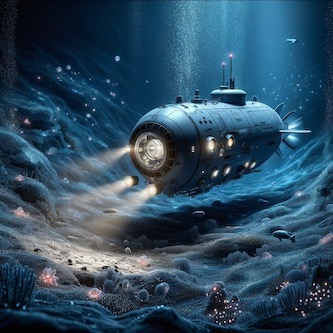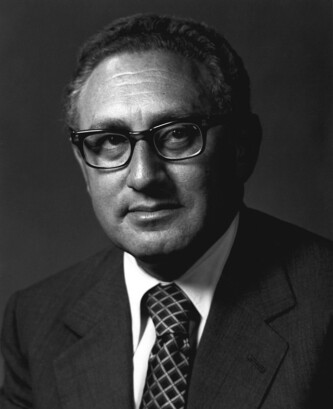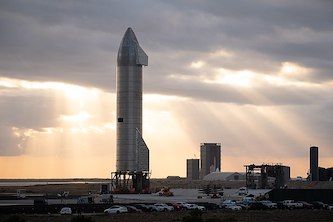Captain Don Walsh, a famous explorer of the ocean, has died at the age of 92. He became really famous over 60 years ago when he went to the deepest part of the ocean, called the Mariana Trench. It’s almost 11 kilometers (7 miles) deep! People were really into space exploration at that time, but Walsh wanted to explore the ocean instead. He joined a mission with the US Navy and went deeper into the ocean than anyone had ever gone before.
At first, Walsh was surprised when he was asked to join the mission because he had only been 100 meters deep in a submarine before. But he thought the special submarine they were using, called the bathyscaphe Trieste, could handle the huge pressure in the Mariana Trench. On January 23, 1960, Walsh and a guy named Jacques Piccard started their descent. It was really cold and the pressure kept getting higher as they went down into the dark.
After many hours, they finally reached the bottom of the Mariana Trench. But because of all the stuff in the water, they couldn’t take a picture of the deepest part of the ocean. Even so, Walsh and Piccard made history and got recognized for what they did. Walsh then worked to promote exploring the ocean and making it safer.
In 2012, a filmmaker named James Cameron did the same dive and Walsh was there to congratulate him. Then in 2019, Walsh’s son, Kelly Walsh, went even deeper than his dad. Walsh’s focus on the ocean, even though people were more interested in space, turned out to be really important. New technology has shown us that the deep sea is crucial for understanding how Earth works, like the carbon cycle and climate change. Walsh’s dive opened the door for more research and exploration of the ocean’s depths.
Original news source: Don Walsh: The man who made the deepest ever dive (BBC)
Listen
Slow
Normal
Fast
Group or Classroom Activities
Warm-up Activities:
– News Reporter Role-play
Instructions: Students will work in pairs to role-play a news broadcast about the passing of Captain Don Walsh. One student will act as the anchor, introducing the news, while the other will be a correspondent who had an ‘exclusive interview’ with Walsh before he passed. Encourage the use of past tenses and relevant vocabulary from the article.
– Sketch It
Instructions: Divide the class into small groups. Each group will receive a portion of the article to read. After discussing the meaning among themselves, they will have to create a quick sketch or storyboard that illustrates the events or concepts from their section. Each group will then present their sketch to the class, explaining the significance of Captain Walsh’s achievements.
– Vocabulary Pictionary
Instructions: Write down key vocabulary from the article on small pieces of paper (e.g., explorer, submarine, descent, trench, pressure, carbon cycle). Students will take turns drawing the words for their team to guess. The aim is to revise vocabulary in a fun and interactive way.
– Opinion Poll
Instructions: Conduct a class opinion poll on the following statement: “Ocean exploration is just as important as space exploration.” Students will walk to one side of the room if they agree, the other side if they disagree, or stay in the middle if they are undecided. Then, select representatives from each group to explain their position, encouraging the use of persuasive language and expressions from the article.
– Future Predictions
Instructions: Invite students to make predictions about the future of ocean exploration based on the article about Captain Walsh’s legacy. They should consider technology, environmental concerns, and human curiosity. Have them share their predictions with the class and discuss the potential impacts on our understanding of the Earth and its processes. This activity will stimulate the use of modal verbs of speculation (e.g., might, could, will).
Comprehension Questions:
1. What was Captain Don Walsh famous for?
2. How deep is the Mariana Trench that Walsh explored?
3. During what era did Walsh choose to explore the ocean, and what was the popular exploration focus at that time?
4. What was the name of the special submarine used by Walsh for his historic dive?
5. Who accompanied Walsh on his descent to the bottom of the Mariana Trench?
6. What prevented Walsh and Piccard from taking a picture at the bottom of the trench?
7. How did Walsh contribute to ocean exploration after his historic dive?
8. Why is the deep sea considered crucial for understanding Earth’s functions, according to the article?
Go to answers ⇩
Listen and Fill in the Gaps:
Captain Don Walsh, a famous (1)______r of the ocean, has died at the age of 92. He (2)______ really famous over 60 years ago when he went to the deepest part of the ocean, (3)______ the (4)______ Trench. It’s almost 11 kilometers (7 miles) deep! People were really into space exploration at that time, but Walsh wanted to explore the ocean instead. He joined a mission with the US Navy and went deeper into the ocean than anyone had ever gone before.
At first, (5)______ was surprised when he was asked to join the mission because he had only been 100 (6)______ deep in a submarine before. But he thought the special submarine they were using, called the bathyscaphe Trieste, could handle the huge (7)______ in the Mariana Trench. On January 23, 1960, Walsh and a guy (8)______ Jacques Piccard started their descent. It was really cold and the pressure kept getting higher as they went down into the dark.
After many hours, they finally (9)______ the bottom of the Mariana Trench. But because of all the stuff in the (10)______, they couldn’t take a picture of the deepest part of the ocean. Even so, Walsh and Piccard made history and got recognized for what they did. Walsh then worked to promote exploring the ocean and making it safer.
In 2012, a (11)______ named (12)______ Cameron did the same dive and Walsh was there to (13)______ him. Then in 2019, Walsh’s son, Kelly Walsh, went even (14)______ than his dad. Walsh’s focus on the ocean, even though people were more interested in space, turned out to be really (15)______. New technology has shown us that the deep sea is crucial for understanding how (16)______ works, like the carbon cycle and climate change. Walsh’s dive opened the door for more research and exploration of the ocean’s depths.
Go to answers ⇩
Discussion Questions:
Students can ask a partner these questions, or discuss them as a group.
1. What is an explorer, and would you like to be one? Why or why not?
2. How would you feel if you had the chance to explore a place no one else has ever been?
3. Do you think it’s more exciting to explore space or the ocean? Why?
4. What’s the deepest you’ve ever been underwater, and what was it like?
5. Why do you think people are fascinated with exploring unknown places?
6. If you could join any kind of mission, like going to space or the deep sea, which would you choose? Why?
7. What is a submarine, and would you like to travel in one?
8. How do you think the pressure and darkness might affect someone deep in the ocean?
9. Do you think it’s important to explore the ocean? Why or why not?
10. What kind of new technology do you think could help us learn more about the ocean?
11. Do you think it’s important for children to follow in their parents’ footsteps, like Walsh’s son did?
12. How do you think the discovery of the Mariana Trench has helped us understand Earth better?
13. Do you think we should invest more money in ocean exploration or in other areas? Why?
14. What are some ways that exploring the ocean can make it safer for people?
15. Do you think there are still many places on Earth that are unexplored? Would you want to find them? Why or why not?
Individual Activities
Vocabulary Meanings:
Match each word to its meaning.
Words:
1. explorer
2. ocean
3. submarine
4. pressure
5. descent
6. history
7. filmmaker
8. research
Meanings:
(a) The systematic investigation and study of a subject
(b) A person who makes movies
(c) The past events and actions of a place or person
(d) The force or weight of something pushing down
(e) The act of going down or descending
(f) A vehicle that can travel underwater
(g) A person who travels to new places
(h) A large body of saltwater
Go to answers ⇩
Multiple Choice Questions:
1. What made Captain Don Walsh famous?
(a) His exploration of the Mariana Trench
(b) His space exploration missions
(c) His work with the US Navy
(d) His deep-sea photography skills
2. How deep is the Mariana Trench?
(a) Almost 11 kilometers (7 miles)
(b) Almost 100 meters
(c) Almost 100 kilometers
(d) Almost 1 kilometer
3. Why was Walsh surprised when asked to join the mission?
(a) He didn’t have any experience with submarines
(b) He had only been 100 meters deep before
(c) He didn’t think the Trieste could handle the pressure
(d) He was more interested in space exploration
4. What was the name of the special submarine used in the mission?
(a) Mariana Trench Explorer
(b) Bathyscaphe Trieste
(c) Oceanic Deep Diver
(d) Submersible Voyager
5. Why couldn’t Walsh and Piccard take a picture of the deepest part of the ocean?
(a) They didn’t have a camera with them
(b) The pressure was too high for photography
(c) There was too much stuff in the water
(d) The submarine’s equipment malfunctioned
6. Who completed the same dive as Walsh in 2012?
(a) Kelly Walsh
(b) Jacques Piccard
(c) US Navy
(d) James Cameron
7. How did Walsh contribute to ocean exploration after his dive?
(a) By becoming a filmmaker
(b) By conducting more deep-sea dives
(c) By studying the carbon cycle
(d) By promoting and making it safer
8. Why is exploring the deep sea important?
(a) It is more interesting than space exploration
(b) It is crucial for understanding climate change
(c) It helps us understand how Earth works
(d) It allows us to find new species of marine life
Go to answers ⇩
True or False Questions:
1. Captain Don Walsh, a renowned ocean explorer, has passed away at the age of 92.
2. The deep sea has proven to be insignificant in understanding Earth’s processes such as the carbon cycle and climate change, despite advancements in technology.
3. Walsh and Jacques Piccard ascended into the Mariana Trench using a regular submarine called the bathyscaphe Trieste.
4. Despite the prevailing interest in space exploration at the time, Walsh chose to explore the ocean instead.
5. Over 60 years ago, Walsh gained infamy by avoiding venturing to the deepest part of the ocean, the Mariana Trench.
6. Due to the presence of debris in the water, they were unable to capture a photograph of the deepest part of the ocean.
7. Walsh declined a mission with the US Navy and set an old record by diving shallower into the ocean than anyone had before.
8. Walsh’s historic dive sparked further interest and research in exploring the ocean’s depths.
Go to answers ⇩
Write a Summary:
Write a summary of this news article in two sentences.
Check your writing now with the best free AI for English writing!
Writing Questions:
Answer the following questions. Write as much as you can for each answer.
Check your answers with our free English writing assistant!
1. Who was Captain Don Walsh and what is he famous for?
2. How deep is the Mariana Trench and why was it significant that Walsh explored it?
3. What were some challenges Walsh faced during his descent to the Mariana Trench?
4. How did Walsh contribute to ocean exploration after his historic dive?
5. What are some reasons why exploring the deep sea is important for our understanding of the Earth?
Answers
Comprehension Question Answers:
1. What was Captain Don Walsh famous for?
Captain Don Walsh was famous for going to the deepest part of the ocean, the Mariana Trench, over 60 years ago.
2. How deep is the Mariana Trench that Walsh explored?
The Mariana Trench that Walsh explored is almost 11 kilometers (7 miles) deep.
3. During what era did Walsh choose to explore the ocean, and what was the popular exploration focus at that time?
Walsh chose to explore the ocean during an era when most people were really into space exploration.
4. What was the name of the special submarine used by Walsh for his historic dive?
The special submarine used by Walsh for his historic dive was called the bathyscaphe Trieste.
5. Who accompanied Walsh on his descent to the bottom of the Mariana Trench?
Jacques Piccard accompanied Walsh on his descent to the bottom of the Mariana Trench.
6. What prevented Walsh and Piccard from taking a picture at the bottom of the trench?
All the stuff in the water, like sediment and particles, prevented Walsh and Piccard from taking a picture at the bottom of the trench.
7. How did Walsh contribute to ocean exploration after his historic dive?
After his historic dive, Walsh worked to promote exploring the ocean and making it safer.
8. Why is the deep sea considered crucial for understanding Earth’s functions, according to the article?
According to the article, the deep sea is considered crucial for understanding Earth’s functions because it helps us understand things like the carbon cycle and climate change.
Go back to questions ⇧
Listen and Fill in the Gaps Answers:
(1) explore
(2) became
(3) called
(4) Mariana
(5) Walsh
(6) meters
(7) pressure
(8) named
(9) reached
(10) water
(11) filmmaker
(12) James
(13) congratulate
(14) deeper
(15) important
(16) Earth
Go back to questions ⇧
Vocabulary Meanings Answers:
1. explorer
Answer: (g) A person who travels to new places
2. ocean
Answer: (h) A large body of saltwater
3. submarine
Answer: (f) A vehicle that can travel underwater
4. pressure
Answer: (d) The force or weight of something pushing down
5. descent
Answer: (e) The act of going down or descending
6. history
Answer: (c) The past events and actions of a place or person
7. filmmaker
Answer: (b) A person who makes movies
8. research
Answer: (a) The systematic investigation and study of a subject
Go back to questions ⇧
Multiple Choice Answers:
1. What made Captain Don Walsh famous?
Answer: (a) His exploration of the Mariana Trench
2. How deep is the Mariana Trench?
Answer: (a) Almost 11 kilometers (7 miles)
3. Why was Walsh surprised when asked to join the mission?
Answer: (b) He had only been 100 meters deep before
4. What was the name of the special submarine used in the mission?
Answer: (b) Bathyscaphe Trieste
5. Why couldn’t Walsh and Piccard take a picture of the deepest part of the ocean?
Answer: (c) There was too much stuff in the water
6. Who completed the same dive as Walsh in 2012?
Answer: (d) James Cameron
7. How did Walsh contribute to ocean exploration after his dive?
Answer: (d) By promoting and making it safer
8. Why is exploring the deep sea important?
Answer: (c) It helps us understand how Earth works
Go back to questions ⇧
True or False Answers:
1. Captain Don Walsh, a renowned ocean explorer, has passed away at the age of 92. (Answer: True)
2. The deep sea has proven to be insignificant in understanding Earth’s processes such as the carbon cycle and climate change, despite advancements in technology. (Answer: False)
3. Walsh and Jacques Piccard ascended into the Mariana Trench using a regular submarine called the bathyscaphe Trieste. (Answer: False)
4. Despite the prevailing interest in space exploration at the time, Walsh chose to explore the ocean instead. (Answer: True)
5. Over 60 years ago, Walsh gained infamy by avoiding venturing to the deepest part of the ocean, the Mariana Trench. (Answer: False)
6. Due to the presence of debris in the water, they were unable to capture a photograph of the deepest part of the ocean. (Answer: True)
7. Walsh declined a mission with the US Navy and set an old record by diving shallower into the ocean than anyone had before. (Answer: False)
8. Walsh’s historic dive sparked further interest and research in exploring the ocean’s depths. (Answer: True)
Go back to questions ⇧













